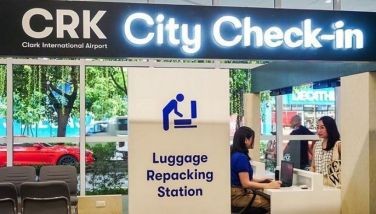A commanding plaza at the ‘Boom City’ of the south

From Ternate in Cavite, we head all the way down the archipelago to General Santos in South Cotabato. GenSan, as the city is more popularly known, is a booming urban center. The good thing about the city is that although it is expanding rapidly, it retains its well-planned and clearly defined physical center, blessed with a large plaza and park.
The City of General Santos is home to over half a million plus including a famous boxer, now a presumptive senator. The city is also famous for its world-champion tuna.
GenSan is a city by the bay. Sarangani Bay is a picturesque body of water that lies on the city’s southern edge. In 1939 this was where General Paulino Santos and 62 Christian settlers from Luzon landed. The group was the pioneer batch of farmers and traders that were sent by the Commonwealth government of Manuel L. Quezon to establish a settlement in this “last frontier” of the country.
The Second World War came very soon after the initial settlement, so it was after Philippine independence that the town, initially called Buayan, grew. The growth of the town was based on a master plan outlined by engineer Leonardo Salazar. Salazar, being religious, was said to have taken inspiration from the shape of a chalice to draw the central core of the town, with the “stem” being a grand avenue leading from the shore of Sarangani Bay. This “chalice” holds the central plaza and park, with the city hall complex and schools above.
Salazar used the planning concept of Neighborhood Units in designing the initial four sections around the central core of the “chalice.” The four original sections of the city were each provided with open spaces, markets and schools, all within walking distance. The town was a walkable, sustainable community that today defines the new urbanist movement, which is currently the preferred template for planning.
In June 1954, the Municipality of Buayan was renamed General Santos as a tribute to its founder. In the 1960s it grew with the entry of large and multinational firms in pineapple and food processing. Finally in 1968, it became a city. In the ‘70s the fishing and fruit industries expanded and addressed the international market, earning it the moniker, “Boom City of the South.”
The 1990s saw GenSan continuing to boom and becoming one of the cornerstones of the SOCSKSARGEN, (South Cotabato, Sultan Kudarat, Sarangani and General Santos) growth region. Infrastructure improvements of a new airport and an enhanced road network connecting General Santos City to South Cotabato and Sarangani were implemented and are influencing urban growth.
The last two decades has seen unprecedented growth of the city. It is now an attractive option for regional and national conventions. Major players in development and retail like SM and Robinsons are already established in the city. Tourism is also a growth sector mainly because of the international-standard Sarangani Airport.
The southwest section of the city, which hosts the airport and the main tuna port, is in fact an area that will see much development. There are already key tourism destinations in Sarangani Highlands Garden and several resorts by the bay’s shore.
The elevated heights near Sarangani Highlands Garden is in fact a perfect site for suburban expansion of the city. It appears to be the equivalent of Ayala Alabang in relation to Makati but closer to the city center and with an elevation like Midlands in Tagaytay.
The area is attracting developers from Manila. I spoke to one of them, Noel Gonzales, head of CHMI Land, who is spearheading a large mixed-use luxury development in the highlands area. He states, “General Santos has progressed rapidly and provides great opportunities for all levels of real-estate development.”
It helps that GenSan has a progressive Mayor in Ronnel Rivera. The UP and USC alum’s administration has been proactive in furthering the city’s trajectory. The city is now listed also as one of the Next Wave cities by the DOST for BPO-IT expansion. Rivera has also seen to it that the city’s urban design and traffic is managed well.
I went down to visit the Heneral Santos Plaza and I walked the entire length of Pioneer Avenue. The half-moon shaped plaza is about two hectares in area and is generously landscaped. It is a popular destination for locals and also hosts a statue of General Santos. Several churches are located around this center.
Pioneer Avenue is a wonderful palm-lined wide boulevard and is the city’s Ayala Avenue. It ends at the waterfront. The city’s sidewalks on the avenue and elsewhere are generally wide and clear. The city blocks around the center lead outwards in a grid that lends itself well to expansion because of the wide easements provided by the original master plan.
All in all, I give GenSan’s plaza a high rating of 8.5 out of 10. It is commodious, easily accessible to the public and proportionate to the surrounding district. The plaza and the city are worth a visit, not just for the tuna, but also for the tons of opportunity this southern city has to offer.
* * *
Feedback is welcome. Please email the writer at paulo.alcazaren@gmail.com. Thank you to Leonardo Rey S. Carino for the information on the master plan of General Santos City.



















